Brain Researcher Teaches Us How to Think Straight, and Feel Better
Opinion Advocates for ideas and draws conclusions based on the author/producer’s interpretation of facts and data.
By Adam Stone
Think right now about a problem you faced earlier today, and wrestled with in your mind.
Got it?
OK, as it turns out, you brought four characters to the experience.
I’ll explain.
But first, a little context.
I’ve done a lot of reporting recently about the insidious impact of corporate-controlled healthcare, and the array of issues impacting patients around here and throughout the country.
In a recent installment in that series, I made reference to exploring our options.
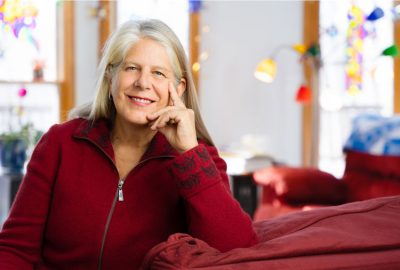
While a part of that process is obviously seeking care from available physicians, another piece of the puzzle is recognizing aspects already within our control.
To state the obvious, nothing can replace contact with your medical team.
The solution to the access crisis is access, full stop.
But given the vast and growing body of peer-reviewed clinical research about the positive impact of mindfulness on physical health and the powerful mind-body connection, the two notions can and should coexist.
With that thought in mind, last week I interviewed Dr. Jill Bolte Taylor, a Harvard-trained neuroanatomist who has captivated audiences worldwide with her insights into the human brain, drawing from her own extraordinary experience of recovering from a stroke.
Whole Brain Living
Taylor’s groundbreaking 2021 book, “Whole Brain Living,” explores how understanding and harmonizing the four distinct modules of cells in our brain – represented as four “characters” – can empower people to choose our responses, cultivate inner peace and enhance relationships.
In our Zoom interview last week, I asked Taylor about the impact embracing this approach has had on her life. She replied that she now “interacts with the world completely differently.”
But how do we all achieve the same?
“Identifying our own four characters so we have a conscious awareness and can control and take responsibility for our own four characters,” she explained.
The four characters are Left Thinking, Left Emotion, Right Emotion and Right Thinking.
But before diving deeper into what Taylor is referring to in more specific terms, let me tell you a bit more about this remarkable researcher and educator, if you haven’t heard about her already.
Stroke of Insight
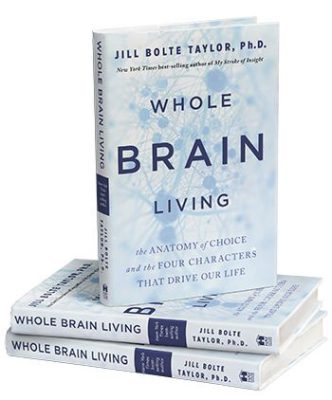
The Indiana native spent her early adult life researching severe mental illnesses, inspired by her brother, who was diagnosed with schizophrenia.
Working in the lab of Dr. Francine Benes at Harvard’s psychiatry department, she wanted to understand why she could connect to reality while her brother was ensnared by delusions.
But then Taylor suffered a stroke on the morning of Dec. 10, 1996, at the age of 37. The life-altering event occurred when a blood vessel in the left hemisphere of her brain ruptured, leading to a massive hemorrhage.
She could not walk, talk, read, write or recall any of her life, essentially becoming, as she put it, “an infant in a woman’s body.”
Over the course of the following eight years, Taylor underwent an extensive journey of recovery, which involved various forms of rehabilitation and therapy to regain her cognitive and physical abilities.
She ultimately gave what became a famous TED Talk, titled “My Stroke of Insight,” delivered in February 2008, more than a decade after her stroke. It’s credited as one of the first talks to go viral online, currently with nearly 30 million views. (She also published a 2008 book, “My Stroke of Insight: A Brain Scientist’s Personal Journey,” which spent 63 weeks on The New York Times bestseller list.)
“And because I could no longer identify the boundaries of my body, I felt enormous and expansive,” Taylor explains in the TED Talk about the day of her stroke. “I felt at one with all the energy that was, and it was beautiful there. And then all of a sudden, my left hemisphere comes back on line, and it says to me, ‘Hey, we got a problem. We got a problem. We got to get some help.’”
Brain Huddle
The stroke provided her a unique firsthand account of how the shutdown of brain functions impacts one’s notion of the self, offering profound insights into neuroscience and the human experience.
“The stroke changed everything because it shifted me away from the push, push, push, go, go, go, more, more, more, climbing the Harvard ladder to being, you know, connected to all that is in the universe and being really happy about that,” Taylor told me.
People have traditionally believed the brain’s functions were divided just between its two hemispheres, but Taylor’s research reveals a more nuanced understanding, highlighting the intricate interplay of four distinct modules of cells within the brain.
Left thinking embodies logical analysis, while left emotion encompasses empathetic understanding; on the other hand, right emotion embraces intuitive feeling, and right thinking integrates creative insight.
Put the four together, and they collectively form the cognitive and emotional spectrum of the way you experience the world.
In “Whole Brain Living,” Taylor suggests a specific tool, which she calls the “Brain Huddle,” to bring your awareness to all four aspects.
‘Use Them Under Any Circumstance’
I asked Taylor for an example from her own life, when she used a Brain Huddle to better process what could otherwise be an anxiety-dominant experience.
She shared her reaction to a recent medical exam, where her characters each responded differently to unexpected, potentially troubling findings in her heart health. Between her four characters, she felt concern, used pragmatism, sought acceptance and engaged in proactive planning.
“I got a bad diagnosis or a mystery diagnosis last week, and now it’s Monday morning,” she explained. “So that character one thinking tissue can, you know, start making some phone calls and pull me up, kind of. The fear is still there, but, you know, I can distract myself in the interim by the immediate, right here, right now, emotional tissue of saying, ‘Well, let’s go do something. Let’s go take a break in the yard. Let’s go be engaged. Let’s go distract ourselves,’ if you will. When we know all four parts, then we can use them under any circumstance.”
The approach allows her to comfortably process any news, including about her own mortality.
“Character four is going, you know, we’ve lived a good life, really, no matter what happens,” she said.
Read her book if you want a deeper understanding.
‘Evolution of Humanity’
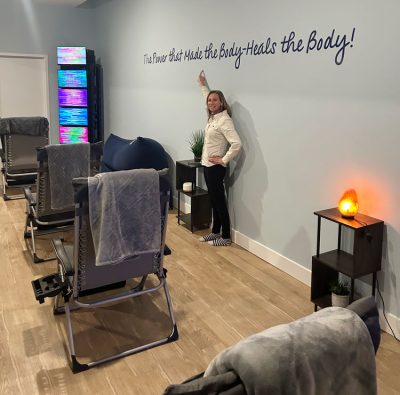
Taylor notes how we go through this process of engaging our characters naturally. But gaining a greater awareness of these four aspects helps mitigate unease and leads to more tranquil living.
Without the Brain Huddle, we already absorb fear, enact practical action, seek solace and plan for the future. However, by cultivating mindfulness of the four characters, we gain the ability to consciously integrate these responses.
She even suggests we personify the four characters with human names, to better grasp our multifaceted personalities. She has Helen, Abby, Pigpen and Queen Toad.
“My friends can call me and instantaneously know which of my four characters they just got,” Taylor chuckled.
I also asked her whether the entire discussion is inherently spiritual; spirituality is a topic of burgeoning interest in the United States, with about 70 percent of adults now identifying as such, according to a 2023 Pew poll.
She replied that the ability to transcend the ego is within our brain’s capacity. We can quiet the left hemisphere’s self-focused identity.
“There’s groups of cells that define where I begin and where I end,” she explained. “And in the absence of all that, I’m just a ball of energy floating around in the universe, just like you. And it doesn’t matter where you are on the planet, we’re all just balls of energy. So ultimately, our energies intermingle and there’s no separation. Is that inherent spirituality? You could label it that, but that’s a left hemisphere label of an ability.”
I wondered whether Taylor is working on any new books. She’s not, and is instead focused on developing a program to get more community leaders – teachers, administrators, parents, the people we used to label society’s key “influencers” – to learn Whole Brain Living’s fundamental principles, “trying to make the village more conscious, and then the children will become more conscious.”
“Whole Brain Living is it for me, Whole Brain Living is the insight that I gained because of the stroke,” Taylor elaborated. “Whole Brain Living is, I truly believe, the evolution of humanity.”
Holistic Healthcare
As for the broader notion of enriching our lives by expanding our consciousness, there’s a growing body of scientific research endorsing this approach, much of which you can incorporate into your life without spending a dime.
In a study published last June in the Cureus Journal of Medical Science, for instance, researchers found evidence of meditation’s positive impact on brain function and immune health.
“Mindfulness has shown an improved anti-inflammatory response and healthy aging by appropriate telomerase regulation,” the study found. “There are also fruitful benefits seen in physical and mental health, which are positive.”
Just as mindfulness can aid health, stress can harm it.
A 2017 study, titled “The Impact of Stress on Body Function,” noted in the journal ECXLI how “many disorders originate from stress, especially if the stress is severe and prolonged.”
In exploring the impact of mindful living on physical well-being, it’s also worth noting that people live till about 85 years old in Japan on average as compared to just over 76 in the United States, a staggering statistical gap.
While there are many factors at play – diet, lifestyle, healthcare access, social fabric – you can’t ignore the stressors of modern Western life.
For the record, unlike some holistic healthcare enthusiasts, I more than recognize the unambiguous miracles of life-saving medicine and surgery, and how they profoundly aid humanity.
To me, holistic healthcare means responsibly incorporating the best of both worlds, not making a binary choice.
But stipulating all of that doesn’t negate the ugly reality of Big Pharma, the perverse prescription drug financial incentive structure, or corporate sick care’s dangerous, cynical, deceitful pooh-poohing of ancient, proven options.
Time out of Mind
Curious to further experience some of these mindfulness modalities myself, I took four hours last Saturday afternoon to explore offerings at Quantum Healing & Wellness, a local holistic energy healing center, invited by the facility’s owner, Dr. Michelle Adams.
After more than a quarter-century working in the pharmaceutical industry, Adams started a new professional chapter in 2022, opening her business in Mount Kisco before relocating to Norm Avenue in Bedford Hills last October.
She said how most of her clients know “there are other alternatives, and that they do work.”
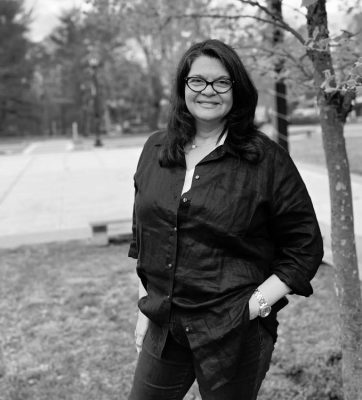
“The majority of people who come in here, I would say 90 percent of people, are awake to what’s really going on in the world,” Adams told me after I listened to one of her Monday evening information sessions in March.
During my visit last Saturday, I spent the first two hours inside what’s called the Energy Enhancement System, known as the EESystem.
The technology basically looks like color static TV screens. Advocates say the screens generate bioactive energy fields, including “scalar waves,” which foster cell regeneration.
I don’t yet genuinely understand the system myself, even after researching it. But what I found most powerful was stepping away from my smartphone, relaxing in an incredibly comfortable chair and listening to meditations provided by the center, sitting inside a room with a warm, nurturing glow.
You start to better understand the untapped power of the mind and it’s incredible, infinite expanse.
And the growing number of elite professional athletes – from LeBron James on down – who tout the benefits of meditation helps illustrate that mindfulness is not about disengaging from the world or ducking competitive situations.
Critical Moment
I also wanted to speak with Quantum Healing & Wellness clients, to learn about the impact of the center on real local people.
Jennie Doukas, a 63-year-old real estate agent and former Mount Kisco resident, travels from her home in Stamford, Conn., a couple times per month to seek solace within the EESystem given what she described as the “crazy, crazy time that we’re living in coupled with how complicated life can get at times.”
“Right away after going, it de-stresses me,” she said in our phone interview last week. “I feel a palpable difference. I can walk out of there with no knot in my stomach and with more of a sense of clarity.”
When she’s tense, Doukas said she can’t be creative. Quantum Healing allows her to regain her footing, to recapture her center.
“It untangles the spaghetti strands of anxiety for me,” the busy grandmother stressed.
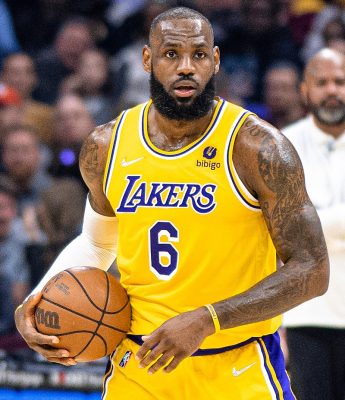
My own afternoon at the center included time inside the salt room, and an infrared sauna with red-light therapy, as well as what’s called Access Bars, which involved a therapist, Rosanne Sapphire, lightly touching 32 points on the head.
In fact, Doukas credited Sapphire for playing a transformative role in her life, helping her deploy more positive language to define her reality, including with more enlightened self-talk.
“I have more of an opportunity to explore other ways of taking care of myself,” Doukas said of alternative modalities and their diminishing stigma.
(The wellness center also offers craniosacral therapy, reiki and massage, among other services.)
While new age approaches have their skeptics, a wide consensus has emerged even within conventional healthcare circles about the benefits of mindfulness, broadly speaking.
For instance, a column I published in November on the Northwell/Northern Westchester Hospital holistic program helped spotlight how even large U.S. healthcare organizations are prudently embracing clinically-supported eastern techniques to better support patients and staff.
“So culturally, as a hospital, we offer reiki therapy, we do holistic therapies,” Northern Westchester Hospital Executive Director Derek Anderson told me for a more recent piece. “We have an integrated center that employees, any time of the day, can go down and with a specialist, get a 10-minute massage, do a quick guided meditation and then go back into the stress.”
That’s something we can all use more of in this fractured, beautiful, troubled, wonderful world.
Recognizing the complementary nature of alternative approaches and conventional medicine serves as a fortifying force for patients.
It’s time for a collective Brain Huddle.
Our healthcare depends on it – in more ways than one.
Adam Stone is the publisher of Examiner Media. E-mail him with tips and feedback at astone@theexaminernews.com.

Adam has worked in the local news industry for the past two decades in Westchester County and the broader Hudson Valley. Read more from Adam’s author bio here.
